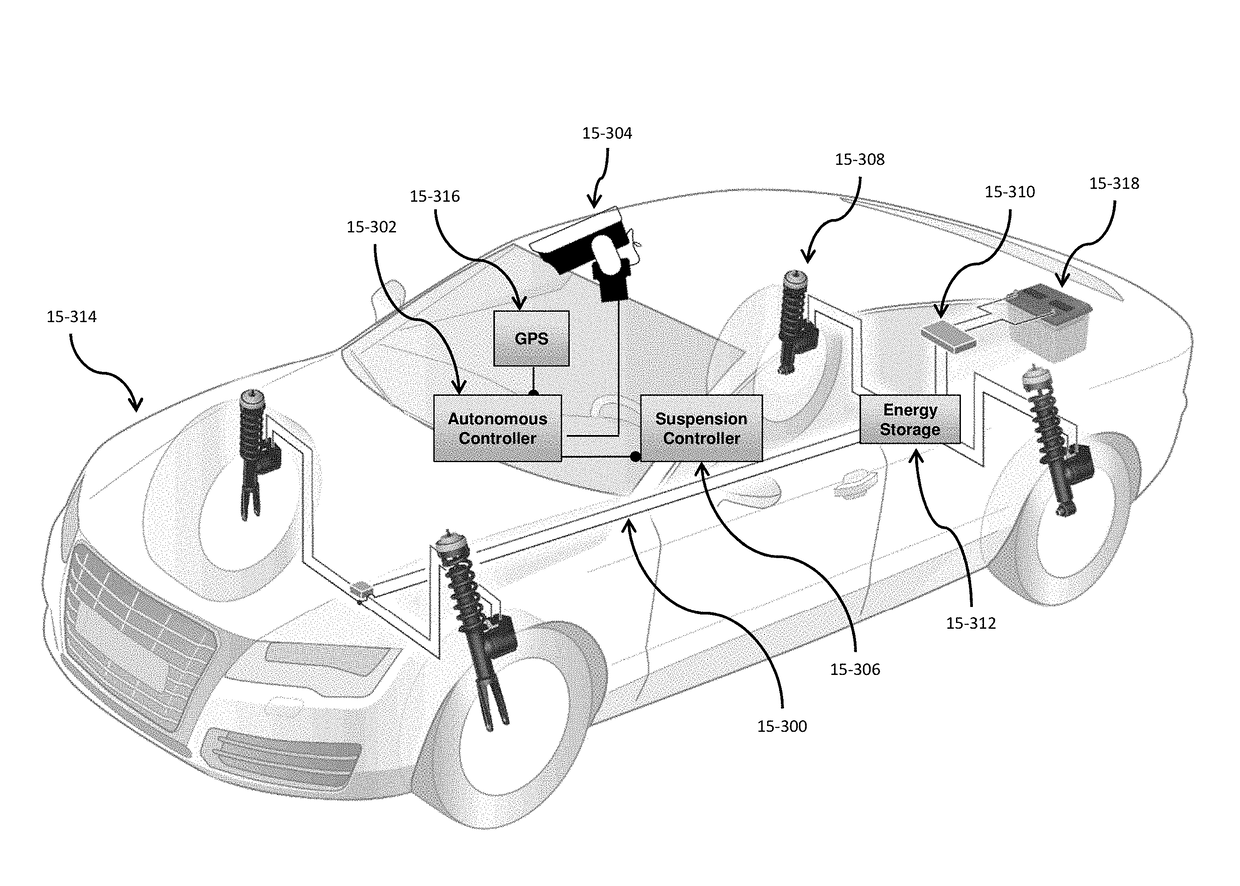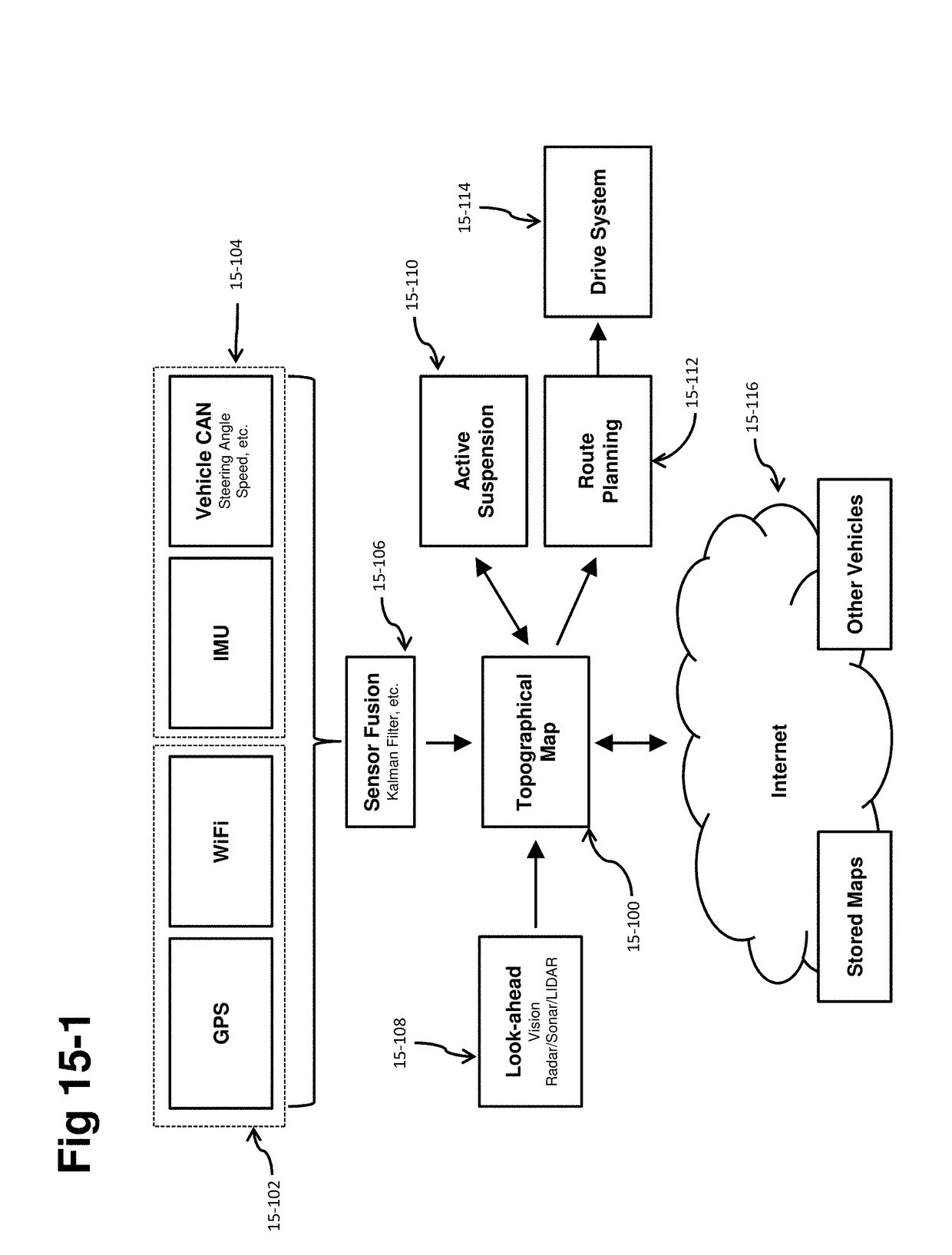Self-driving vehicle with integrated active suspension
a technology of active suspension and self-driving vehicle, which is applied in the direction of shock absorbers, electronic commutators, transportation and packaging, etc., can solve the problem that the control system may not fully achieve such compensation attitude behavior, and achieve the effect of improving ride comfort, self-driving vehicles, and active suspension technologies
- Summary
- Abstract
- Description
- Claims
- Application Information
AI Technical Summary
Benefits of technology
Problems solved by technology
Method used
Image
Examples
Embodiment Construction
[0021]While self-driving vehicles and active suspension systems exist in the prior art, such systems have traditionally been separated stand-alone technologies. Significant ride benefits can be delivered to passengers by combining the sensing and command functions of self-driving vehicles with the command authority to change vehicle dynamics that a fully-active suspension provides.
[0022]Some aspects relate to vehicle systems that utilize topographical maps of the road surface. Such maps include positional information as well as road surface information such as road height. These maps may be highly granular in detail, showing individual road imperfections, bumps, potholes, and the like. These maps may be generated by a variety of means, including vision camera sensors, LIDAR, radar, and other planar or three-dimensional scanning sensors, and the like. The maps may also be generated by sensor information post-encounter, such as the front suspension actuators determining information ab...
PUM
 Login to View More
Login to View More Abstract
Description
Claims
Application Information
 Login to View More
Login to View More - R&D
- Intellectual Property
- Life Sciences
- Materials
- Tech Scout
- Unparalleled Data Quality
- Higher Quality Content
- 60% Fewer Hallucinations
Browse by: Latest US Patents, China's latest patents, Technical Efficacy Thesaurus, Application Domain, Technology Topic, Popular Technical Reports.
© 2025 PatSnap. All rights reserved.Legal|Privacy policy|Modern Slavery Act Transparency Statement|Sitemap|About US| Contact US: help@patsnap.com



